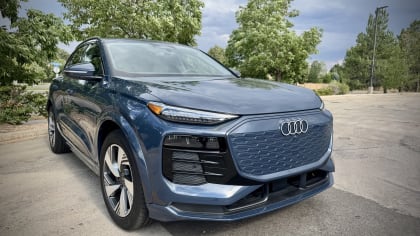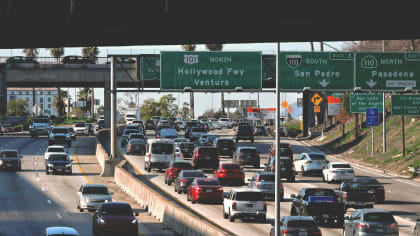Dave Wolin: The Hound of the Bakersfields
Published on Mon, Nov 2, 2020
By: Doug Stokes
With a sudden revelation, Dave Wolin decided to build a road-racing '32 Ford Hot Rod - and a damn good one at that.
Channeling the great Duffy Livingstone, the father of Kart racing (who's Bucket T Roadster shook up southern California lace-back driving glove road racing in the late fifties by regularly handing Ferraris, Maseratis, and Corvettes their lunch) multi-time racing champ, event promoter, landowner, and inveterate/serial racing car builder, Dave Wolin awakened early one morning, yawned, scratched an itch, took a quick look around, and then and there decided that it was long past time that he built himself a (damn) hot rod.
And with that, tall Dave Wolin took off in a new direction, turning away (eschewing is a better word for it) from the traditional '32 Ford chassis and early cross spring suspension, and harking back to the days of the Livingstone car that was called the “Eliminator” and the guy who built it who always claimed he was from Mars and who could weld metal like Michelangelo could paint chapel ceilings.
That prologue prologued, here’s the straight scoop on Wolin’s rad road-racing rod, just as I was told it happened.
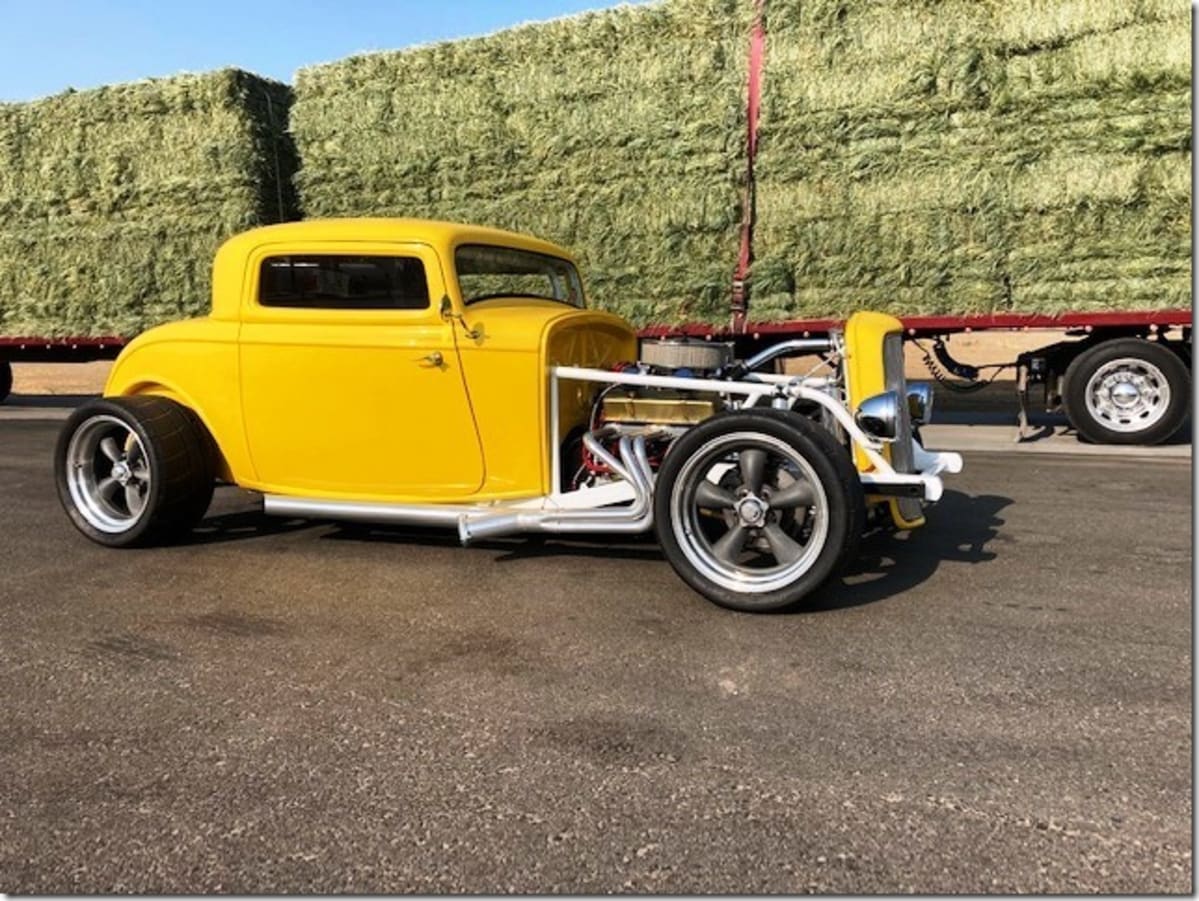
Looking to combine his build of a new hot rod with an all purpose track day road racing chassis, Wolin worked noted chassis builder Terry Henry at Raceprep in Bakersfield to design and build a platform worthy of a Trans Am Series or NASCAR road course winner, they came up with a tough, burly, no nonsense design featuring a110 inch wheelbase with (deemed quite necessary at the speeds this car can fly around a race track) full roll cage.
The fabricated steel tube chassis uses adjustable QA1 Colilover spring/shock sets on each each end of the car, with unequal length A-arms in the front and a Sweet rack and pinion unit providing the steering honors.
The rear suspension uses trailing arms and a watts link, attached to a Ford 9-inch rear end. All of the above provide for drum-tight overall handling and a pretty fair (if a bit stiff) ride if you happen to want to drive your car to the track.
The 18" American Racing “Torq-Thrust” alloy wheels are cloaked (Cali Hot Rod style) in big old 275x35x18 Nitto NT01 tires up front and sport just plain massive 335x30x18 NT01 skins at the rear.
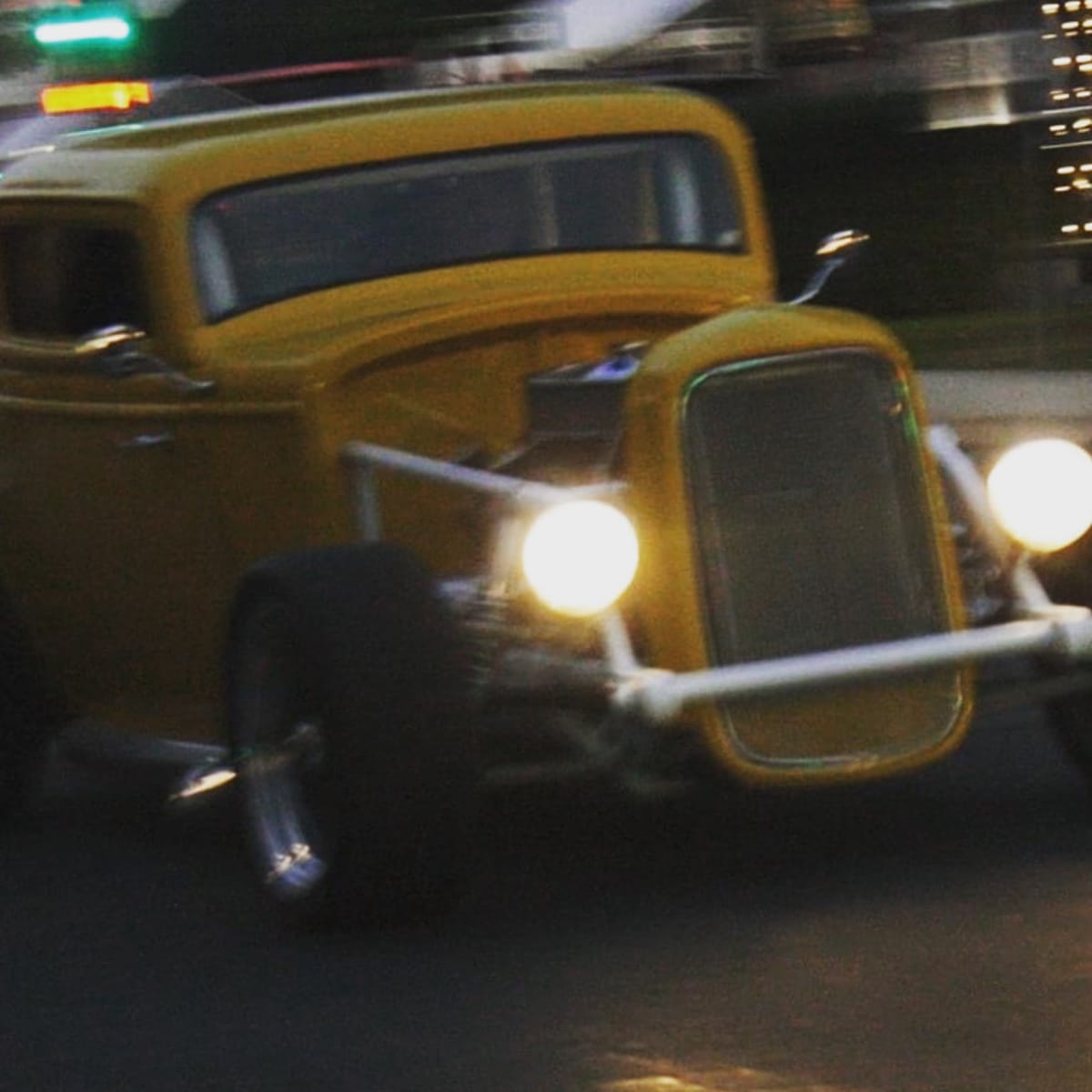
The finished car weighs only 2300 pounds with perfect 50-50 weight distribution made possible by some very creative setback of the engine as one might note from the photos.
Dave Gossett at Davviki provided a reasonably-priced fiberglass three window body, with the doors hung and glass installed that was already gelcoated in BRIGHT yellow (thus saving the cost of a paint job). Remember friends this is a working Hot Rod that road races, not some trailer queen who’s only fear is some standing to close with a rodeo belt buckle.
Virtually every working part on this car was fabricated from scratch, the suspension arms, fuel tank, even the little details like the alternator and ac mounts (yes it’s got AC to deal with those hundred degree California summers*). Wolin says he's not a big fan of the typical bolt on hot rod parts: "Most don't fit very well and didn't meet my requirements and racecar standards.”
The power unit started out as a tweaked 383, topped with four Weber carburetors and equipped with a Canton road racing oil pan that’s specially baffled to keep engine oil pressure steady on long turns. The transmission is a Track Glide proven, manually shifted, two speed automatic with a deep pan and oil cooler.
Early on in the development of this racing rod, the very cool (but also very tempermental) Webers gave way to a Proform 4-barrel carburetor mounted on an Edelbrock manifold. That change in the gasworks greatly simplified tuning and setup.
But wait … as all hot rodders know way deep down in their peggers and engineer boots, there’s always something better out there … in this case it was an Edelbrock EFI** system, the magic in that set-up was that the fuel jumped economy from 5 to 15 mpg and a few new horses came along with the change. Wolin tells us that (confidentially) his machine runs best on 100 octane VP racing fuel (and hopes to get a free 5-gallon can for the plug).
Wolin hasn't had the car to the dragstrip yet but anticipates 10 second quarter mile times.
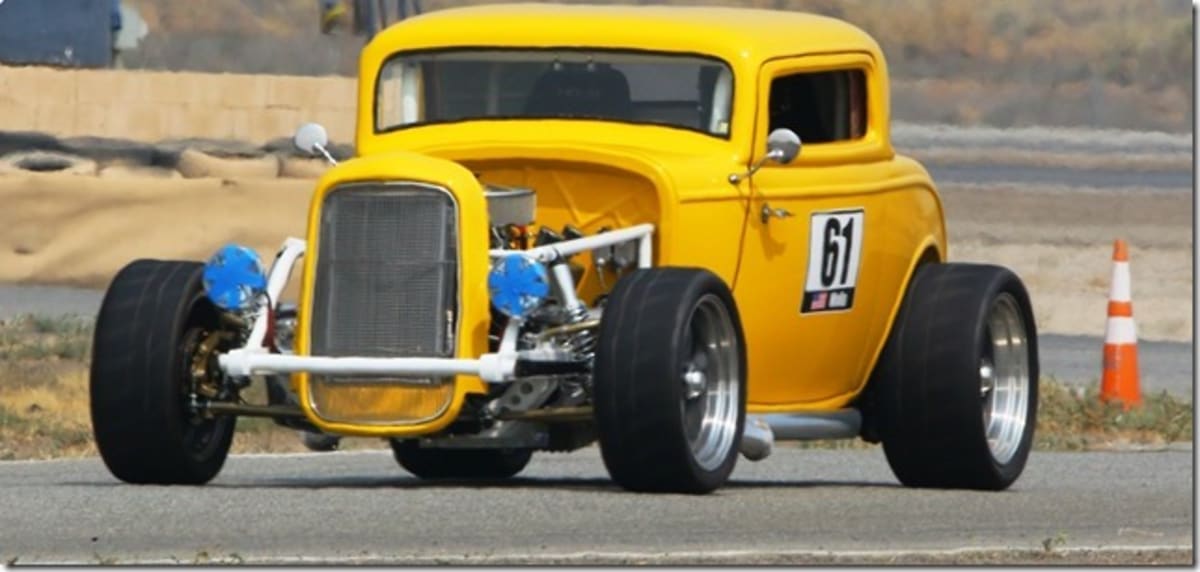
Some recent testing on the winding 2.5 mile road course at Buttonwillow Raceway Park, provided performance equal or better than stock Corvettes and Porsches. As one might expect, this rather tall, brick-shaped gives away a bit of on the top speed, (the '32 body doesn't match the low drag coefficient of those sleek Corvettes or Porsches). However, David more than makes up the lap times in the corners with sportscar-like cornering speeds.
Wolin says that this bolide tops out at about 150 miles an hour, telling us that he’s seen the needle on the car’s 140 MPH Autometer GPS speedometer tightly pegged and that the car still feels like it is accelerating (I’ll take his word for it there).
And speaking of outright speed runs Dave’s next stop for his bright yellow baby is El Mirage Dry Lake to see how the car matches up on the long, seemingly endless desert flats. And, good you should yes, Wolin will drive this little beast there … we weren't kidding about this one … it is NOT a damn trailer queen, no how, no way, no sir! SCENE VIGNETTES FADE OUT -DS
*Did we mention that David lives in the aptly-named town of Bakersfield, California?
** Electronic Fuel Injection
HOT ROD MEETS CANNONBALLER
If Dave W.’s above fuel-injected tale of his fever-dream open-wheel thrill ride strikes a chord, there’s a book that you might like to read by the late Brock Yates that’s called “Hot Rod”.
It’s the first-person of Yates tracking down, finding, becoming “parted at birth) friends with the builder, restoring, and subsequently racing the original Duffy Livingstone “Eliminator” in the high-zoot, “provenance and pedigree” Monterey Historics.
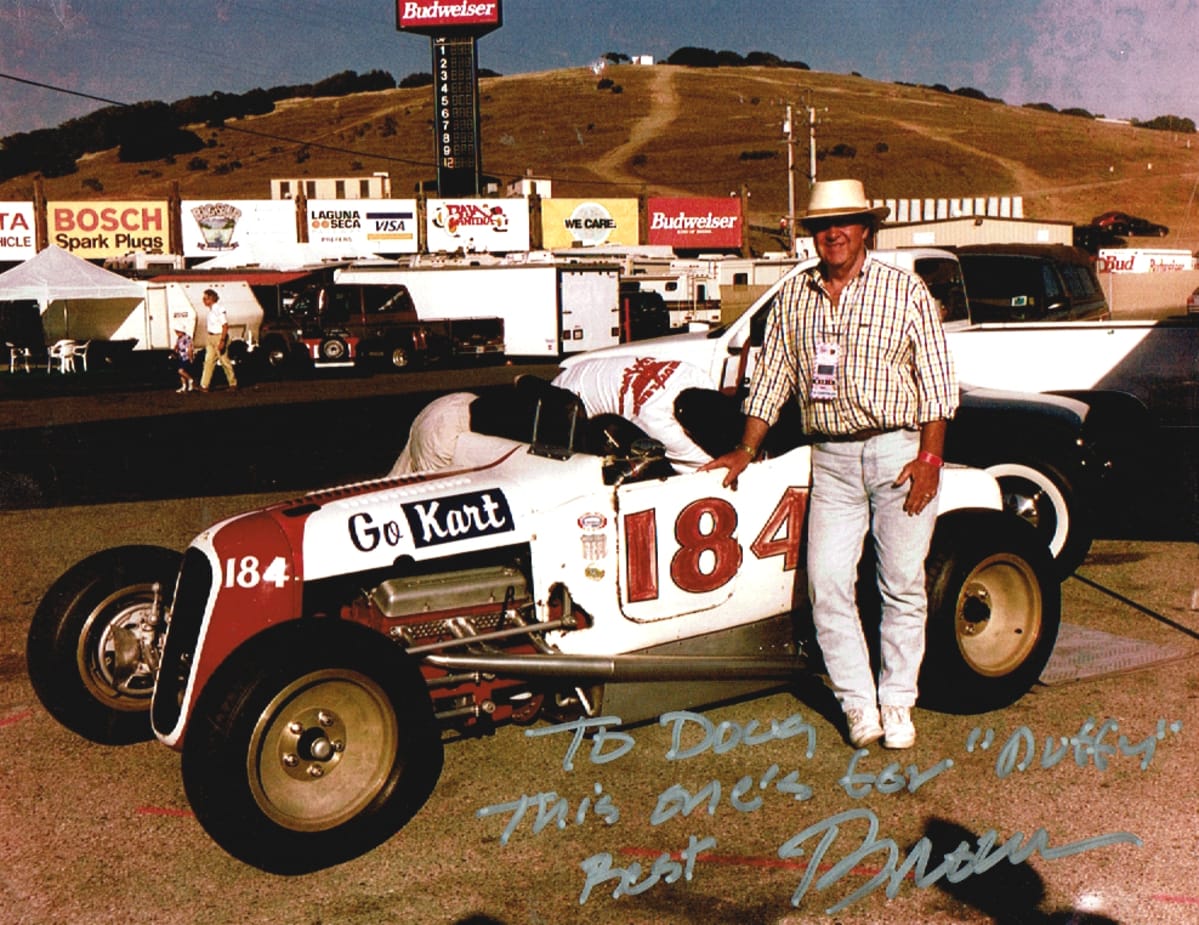
I’ve been lucky enough to have had the friendship of both of these two guys and I think (if you can find a copy of his book) you’ll get to like and admire both of them pretty quickly. About the best description that I can come up with here is that they were both: “their own man”.
They enjoyed being who they were and pretty well typified the curse of “living an interesting life”. I miss them both. -Stokes
Oh yeah, the CANNONBALL inference above … as it turns out Brock Yates (yes, THAT writer, editor, stickler for the facts, and bar-keep Brock Yates) is known (and fully-accredited) far (and wide) as the progenitor of the iconic Cannonball Sea-To-Shining Sea Memorial Trophy Dash, which was, as his 2002 book of the same name (just “CANNONBALL” actually) modestly indicates was: “The World’s Greatest Outlaw Road Race”. Find/Read it too.
(serving suggestion only / DO NOT TRY THAT AT HOME or anywhere for that matter)
